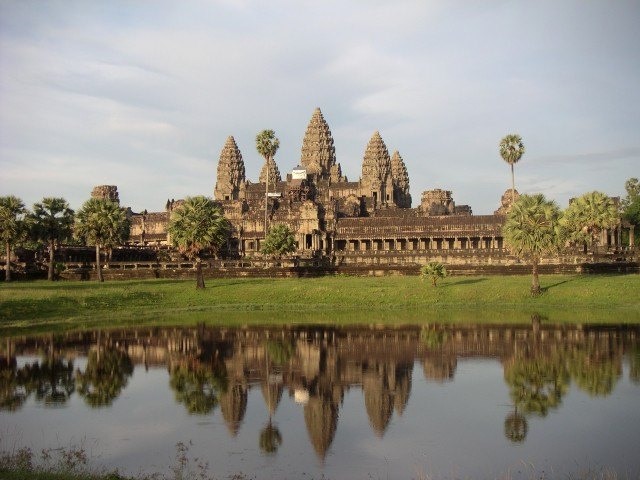What you should know about the 2021 Tour de France route
Guess what?
It’s only 19 days until the 2021 Tour de France.
As it’s been some time since the route was confirmed last autumn, it’s time to refresh memories of what Tadej Pogačar, Geraint Thomas, Primož Roglič and Co. have to battle through from June 26.
Here are the key features of the 2021 Tour route, and how they could impact the race.
A grippy Grand Départ

The northwestern department of Brittany hosts the three-day Grand Départ this year.
Narrow roads, a procession of short sharp climbs, and the risk of strong coastal winds will turn the opening stages of this year’s Tour into a series of midsummer northern classics.
The opening day of any Tour de France is fraught with peril as the tension-riddled bunch fights for every scrap of road in the bid to keep GC players safe. The rolling hills and tight parcours of stage 1 out of Brest on June 26 could make for a nerve-jangling opener every bit as dramatic as the rain-soaked roads of Nice last August.
The first yellow jersey will be decided on the uphill kick to Landerneau, and stage 2 also sees a hilltop finish atop the steep slopes of the Mûr-de-Bretagne.
Who will be the first yellow jersey? Look to those that ruled the classics – the terrible trio of Mathieu van der Poel, Wout van Aert and Julian Alaphilippe.
The sprinters will finally see their first opportunity on stage 3 to wrap up what promises to be an explosive, aggressive opening phase of the race.
Downhills as important as uphills

The likes of Ineos Grenadiers and Jumbo Visma will be assembling the carriages of their mountain trains in the next few weeks. But the downhills could be every bit as important as the uphills at the 2021 Tour de France.
There are just three mountaintop finishes this year as descents to the line take center stage.
Stage 9 will see the first mountaintop finale in Tignes, with the Pyrénéan double-header on stage 17 and stage 18 the next two uphill finishes. The shallow 21-kilometer drag to Tignes won’t be hard enough to see major gains and losses, but stage 17 to the fierce Col du Portet – 16km at 8.7 percent – could leave some swinging.
Stages 8, 11, and 15 could all be make-or-break for yellow jersey hopefuls, however. All three stages finish at the bottom of a high mountain as the Tour reduces focus on the sometimes-stale mountaintop finales.

What could it mean in the battle for yellow?
While it won’t eliminate the impact of superteams Ineos Grenadiers and Jumbo-Visma, downhill finishes typically invite attacking racing and increase the likelihood of an upset.
Just look at the final stage of this year’s Critérium du Dauphiné – Ineos Grenadiers nearly lost its one-three on the podium in the space of one descent when Geraint Thomas slid out and Richie Porte’s caution saw him momentarily dropped.
The mountain trains had better test their brakes in the weeks before the Tour rolls out.
Time trials to shape the racing

Two long individual time trials could totally sculpt the GC landscape at the Tour.
A flat 27.2km race against the clock on stage 5 will serve as the first major shuffle of the GC deck.
Any top GC contender that comes out of the test into Laval in yellow may see their new jersey as both a blessing and a curse.
An early GC lead is of course a massive coup, an early boost of morale. But that rider’s team will have the distraction of defending the jersey through the opening mountains of the Alps and be burdened with a lead to defend for 16 more stages.
No matter what happens on stage 5’s time trial, the 2021 Tour win will be decided by whoever comes out top after the second long TT of the race on stage 20.
The flat 30.8km course into Saint-Émilion will stack the chips in favor of any favorite capable of pulling out a good time trial after three weeks of racing. Any GC hopeful that doesn’t fancy his chances on the TT bike will be pressed into attacking through the final mountains of the Pyrénées in the hopes of pulling a “Hail Mary.”
Sprinters incentivized to stick through the mountains

The final week of the 2021 Tour isn’t the type of high-altitude horrorshow typically served up by the Giro.
Instead, the final week will see three days in the Pyrénées before the Tour wraps up with two sprints and a TT.
A fast finish in Libourne just two days before the Champs Élysées super-sprint will give the fastmen the carrot they need to ride through the mountains rather than calling quits early.
There is a maximum of eight sprints through the Tour’s three weeks. With two of those opportunities coming in the last three days of racing, the high-mountain grupetto could be bigger than ever as sprinters hang tough in hope of a prestigious Tour win.
From a viewer’s perspective, a concluding trio of sprints and a time trial does run some risk of this year’s Tour losing some fizz just when it should be at its sparkliest.
Although last year’s Planche des Belles Filles time trial was one of the most dramatic stages in recent memory, the flat 31km through the Gironde vineyards is unlikely to serve the same kinds of upset.
This year is the year for the sprinters to step up in week three.
Short mountain stages and bonus points are back

Tour de France race director Christian Prudhomme has been slowly but surely tweaking his race to pull out more action in recent years – and he’s not stopping this summer.
In a nod toward the growing Vuelta-ification of grand tour stages, there are three short, explosive mountain stages this year, with the race to the top of Luz Ardiden clocking in at just 130km in total.
Do shorter stages guarantee more attacking racing?
Not really. But they do prevent the slow-burn attrition of the seven-hour multi-mountain slog that used to be the go-to in the final week of a grand tour.
But the days of old-school grind across a procession of high peaks isn’t over altogether, with this year’s Tour packing two mountain stages at nearly 200km each.
The addition of strategically placed bonus points will add spice to those marathon days on stages 11 and 15 however.
Like last year, 8, 5, and 2 seconds will be awarded to riders first to cross six key locations through the route, typically the final climb of the day.
Roglič forged his yellow jersey campaign last summer through the canny accumulation of bonus seconds that added an extra narrative to the racing and gave fans something to look out for ahead of the finish line. Handing GC riders something to scrap for mid-stage saw Roglič and Pogačar elbowing in mid-stage sprints and added a new dynamic.
Love ’em or hate ’em, bonus points are back, and they could have a major impact on the 2021 Tour.




